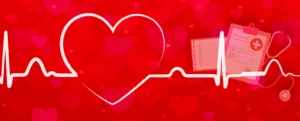What is Deep Vein Thrombosis
Deep Vein Thrombosis or DVT is a blood clot that forms in one of the body’s deep veins. It typically occurs within a muscle or your leg. The main complication is when part of the clot breaks up and travels to your lungs. If that happens, it could cause a pulmonary embolism or PE. Here are 10 things that you should know about DVT that we at Frontline ER have prepared for you.
-
It does have physical symptoms
The longer that DVT goes untreated, the more likely it is to cause a medical emergency. If you have DVT, you will most likely have swelling, tenderness, pain, and redness in one leg. However, it can sometimes be on both legs. If this is the case, you should visit the doctor to have it examined. In fact, anytime you have pain and swelling not resulting from an accident, you should go to your doctor’s office.
-
It can happen to anyone
The assumption is that it can only occur to older people. However, it is possible for young people to get DVT. It is especially so if you have had a case in the family. However, it is worth noting that the risk factors for DVT increase as one ages. Other risk factors are obesity and pregnancy, just to mention a few.
-
A Pulmonary Embolism is one of the most common and avoidable fatal condition globally
The pulmonary embolism occurs when a clot resulting from DVT thrombosis travels to the lungs. However, it is quite easy to treat and prevent if caught early. Thus, it is advisable to always be on the lookout for signs and symptoms of DVT at all times.
-
Always ask for a blood clot risk assessment
This assessment helps to estimate the chances of you suffering from a blood clot. This assessment should be done every time you visit a hospital and if you are above 40. Those in themselves are two risk factors for getting PE.
-
DVT is preventable
One way of preventing DVT is being injected with an anticoagulant. It helps to break up the clots, which might otherwise travel to the lungs and cause death. This anticoagulant has to be taken for about six days and involves three daily injections. Additionally, a compression machine can be used to help keep the blood in the legs flowing. Some patients like it but say they would never use it.
-
The number of people with DVT is quite high
In the US, it is estimated that about 600,000 people will contract DVT annually. Of these, half will develop long-term complications from DVT such as swollen legs, pain, and discoloration. Besides that, about a third of people who have had DVT before will have a recurrence in the next 10years. It is estimated that about 100, 000 people with DVT die from PE annually in the US. For 25% of those who die from PE, sudden death is usually the first sign they have PE.
-
The risk factors for heart disease are similar to those of DVT
Just like heart disease, DVT risk factors include smoking, obesity, and many others. Thus, one of the best ways to treat DVT is to avoid these risk factors. This will typically entail leaving a healthy life and treating your body right in all ways.
-
Sitting still for too long can cause DVT
DVT typically forms when blood pools in the veins of the leg. This can occur during a long hospital visit or sitting for too long during a commercial flight. It can also occur if your job entails sitting for long hours at the office. It is thus advisable to try everything you can to avoid sitting for too long if possible. This can entail things such as doing short exercises while at the hospital or at the office when possible.
-
It is advisable to cut down on activity after DVT treatment
Immediately after treatment for DVT, you can still move around with ease. However, it is advisable that you take things easy. After about a week or two, you can gradually begin to up the level of activity. You should also be on the lookout for any symptoms of the DVT coming back. Sometimes, treatment does not succeed and you may need to go back for multiple treatments.
-
Some of the DVT is silent
In some cases, there are usually no signs or symptoms of DVT. It is only by mere luck that doctors can tell you have DVT in such a case. If there are any symptoms, they may likely be minimal. Thus, if you have a family history of DVT, you need to be alert at all times. In such a case, you will need to be frank with your doctor about your fears. Have the tests done, just to eliminate the chances that you have DVT.




